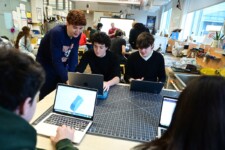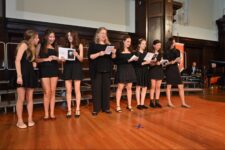8th Graders in Fieldston Middle’s Chinese language program headed to New York City’s Chinatown for an experiential learning opportunity and a chance to immerse themselves not just in the language they’ve spent the last three years studying, but the history, culture, and community of a vibrant neighborhood.
Immersive Chinatown Field Trip: 8th Grade Experiential Language Learning
Xiaofei Li, Fieldston Middle Language Department Chair, uses the trip as an opportunity to connect a central theme from the 8th Grade Chinese curriculum, community, with a real-world example. “Students take what they’ve learned to the community we’ve talked about in class,” she remarks, “Usually we go on a walking tour that’s led by an educator from MOCA [the Museum of Chinese in America] to provide them with background on the community — new challenges and old struggles — so they can connect what they learned in class to what’s actually happening in Manhattan.”
This year’s field trip included that walking tour, a scavenger hunt where students were challenged to find ten local businesses, and, of course, the chance to refuel with delicious dim sum. Li’s highlight of the trip was their tour guide subverting expectations. Leading the entire class into a tiny alleyway, their guide told them the history of the alley: the Chinese mafia was rumored to have used the alley for fighting, and the bricks were painted red as a warning to outsiders not to intrude. “When they heard ‘mafia,’ they were like, ‘what?’” laughs Li, who then explains, “There was actually never any documentation proving that rumor. It was a type of strategy to pit the Chinese people against other communities. I think when I hear that story, and when students hear that, it’s powerful.”
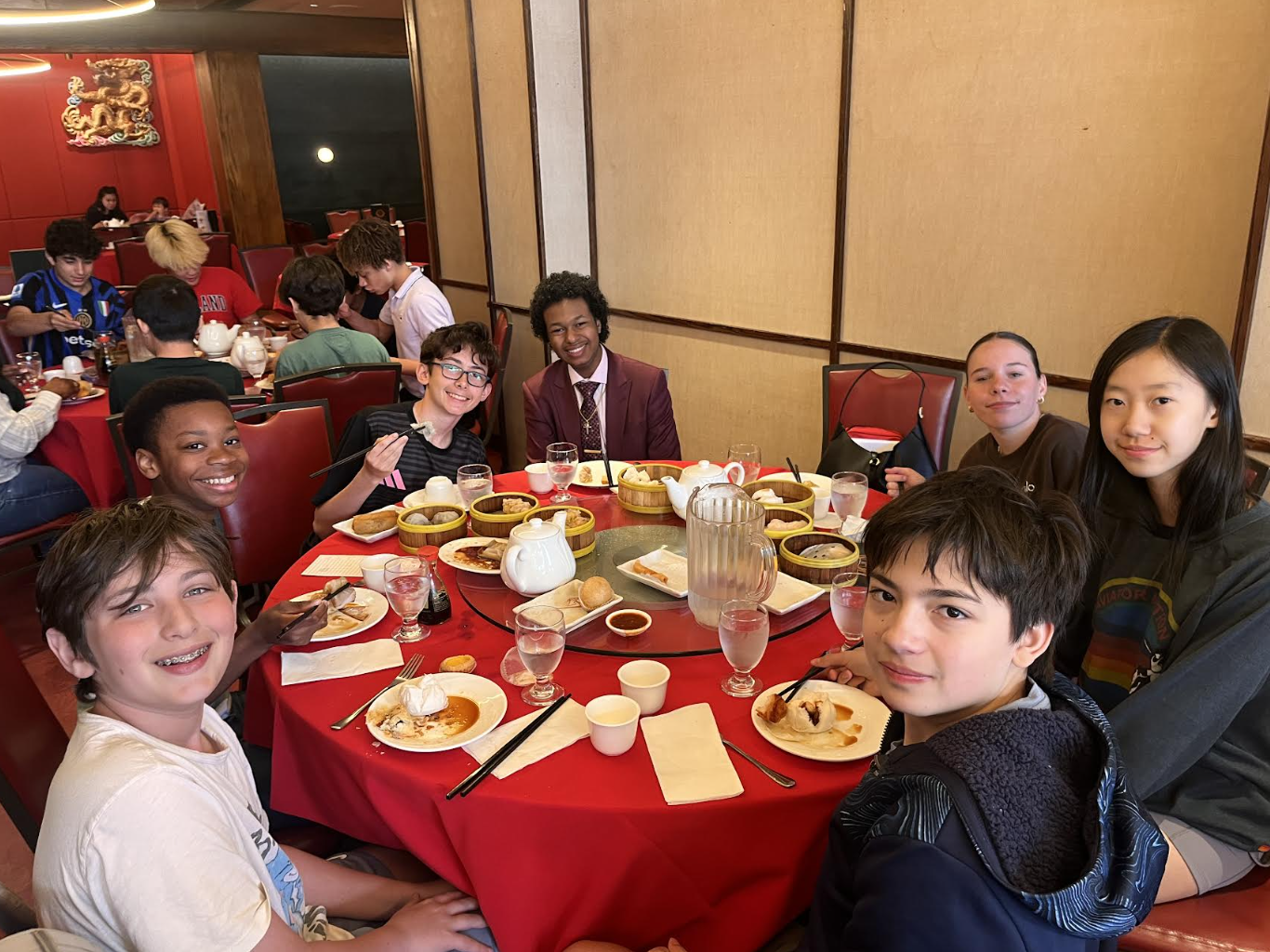
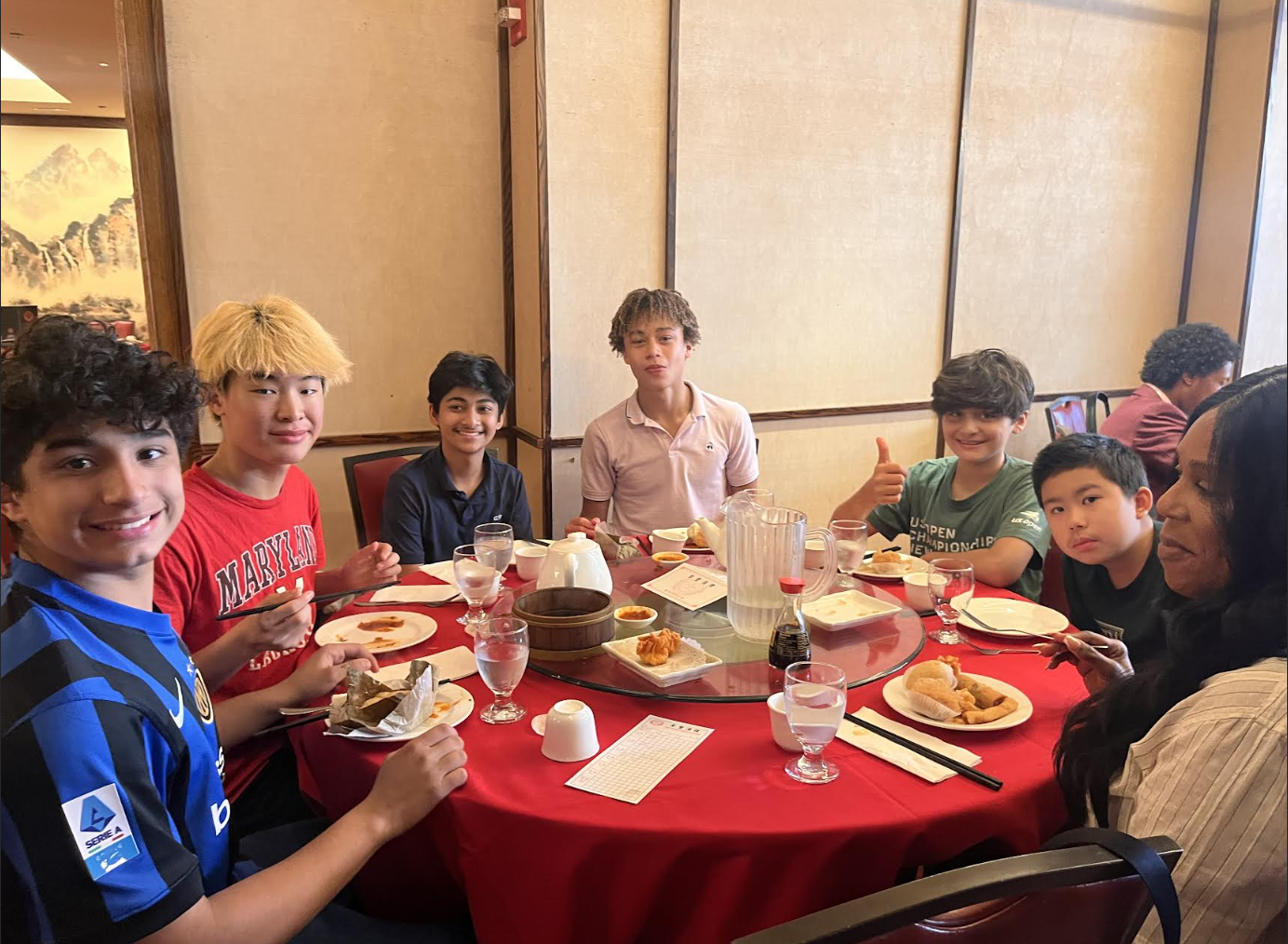
Like all of ECFS, the Language Department uses ethical learning as the foundation of its curriculum. Li summarizes the goal of the department succinctly: “The goal is to communicate. It’s not just to memorize 500 words.” This focus on true communication, rather than rote memorization and repetition, empowers our students to enter the world capable of facilitating important and engaging conversations, connecting across cultural differences, and maintaining a sense of curiosity.
Middle School World Language Curriculum: Choice & Student Agency
Over the past two years, the Middle School Language curriculum has undergone a change that aims to provide students with a sense of agency in choosing the language they’re interested in studying. Now, rather than committing to one language from the very beginning, students spend time with each, getting a sample semester of Chinese, French, Latin, and Spanish in 6th Grade before choosing one to continue with throughout Middle School.
“Now that we are in the second year of this program, we definitely see the benefits,” says Li. “Students are approaching languages with more of an open mind, they have more confidence in themselves, and they’re comparing the different elements of all of the languages, and sometimes even comparing them to English. That’s what we wanted to see before we started this program.”
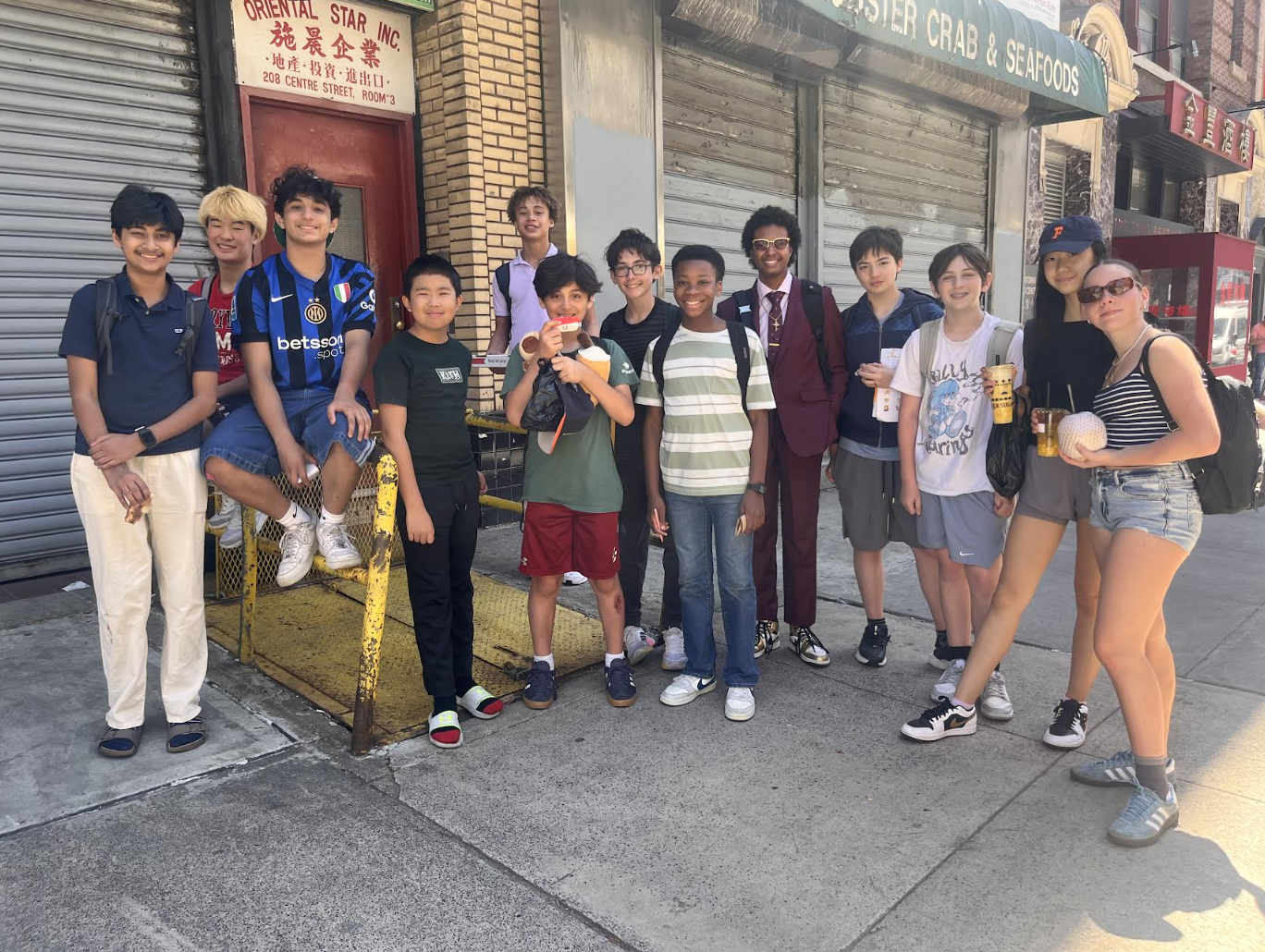
Aligning Middle & Upper School Language Programs: Myth of Nezha Case Study
In the future, Li hopes to continue innovating and aligning the Middle and Upper School curricula with the goals set forth by Executive Director of Teaching and Learning Francesca Pisa. A recent collaboration with the Fieldston Upper Chinese language faculty led to an exciting discussion about how the Chinese myth of Nezha and its recent film adaptations might serve as a cultural touchstone for students from 6th Grade to 12th Grade. Li explains that the myth, which centers on one of the only anti-heroes in Chinese culture, has elements that make it exciting for students of all language levels. “With 6th Graders, we talk about what he looks like, what he’s wearing, what subjects he would be interested in if he comes to Middle School,” she explains, “By the time we get to Upper School, they can talk more about his relationships and friendships, and also how to overcome bias.”
Students are approaching languages with more of an open mind, they have more confidence in themselves, and they’re comparing the different elements of all of the languages, and sometimes even comparing them to English.
For Li, language learning in the Middle School aligns with the values of the division. “We tell them, you make mistakes. This is a time for you to make mistakes and find what you really want to do here and how you can do it,” she reflects. From classroom lessons to real-life practice, at Fieldston Middle, “There’s a type of trust that you can do it and the students can do it. That makes me feel like teaching language here is very rewarding.”

